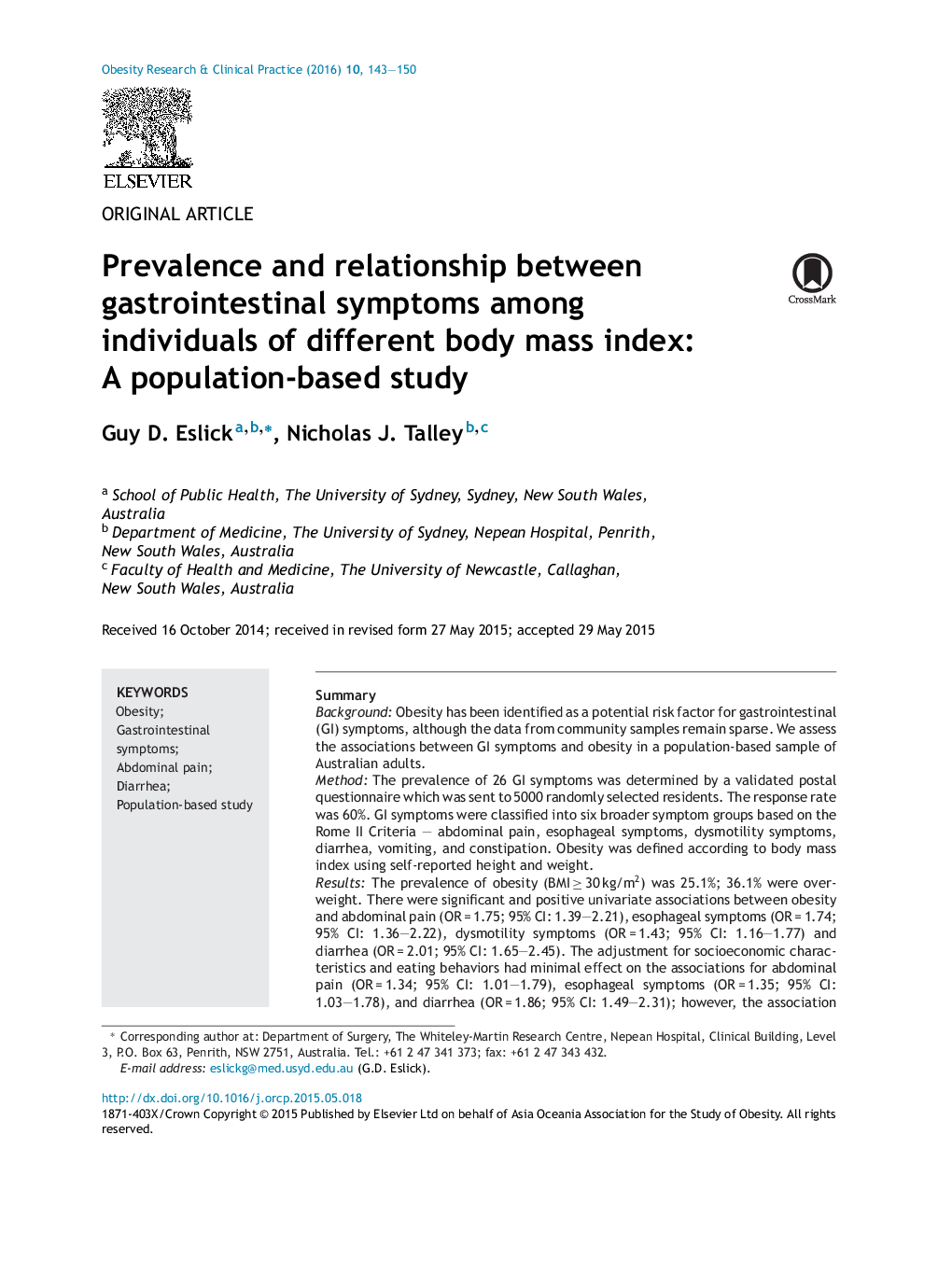| کد مقاله | کد نشریه | سال انتشار | مقاله انگلیسی | نسخه تمام متن |
|---|---|---|---|---|
| 3003521 | 1180806 | 2016 | 8 صفحه PDF | دانلود رایگان |
SummaryBackgroundObesity has been identified as a potential risk factor for gastrointestinal (GI) symptoms, although the data from community samples remain sparse. We assess the associations between GI symptoms and obesity in a population-based sample of Australian adults.MethodThe prevalence of 26 GI symptoms was determined by a validated postal questionnaire which was sent to 5000 randomly selected residents. The response rate was 60%. GI symptoms were classified into six broader symptom groups based on the Rome II Criteria – abdominal pain, esophageal symptoms, dysmotility symptoms, diarrhea, vomiting, and constipation. Obesity was defined according to body mass index using self-reported height and weight.ResultsThe prevalence of obesity (BMI ≥ 30 kg/m2) was 25.1%; 36.1% were overweight. There were significant and positive univariate associations between obesity and abdominal pain (OR = 1.75; 95% CI: 1.39–2.21), esophageal symptoms (OR = 1.74; 95% CI: 1.36–2.22), dysmotility symptoms (OR = 1.43; 95% CI: 1.16–1.77) and diarrhea (OR = 2.01; 95% CI: 1.65–2.45). The adjustment for socioeconomic characteristics and eating behaviors had minimal effect on the associations for abdominal pain (OR = 1.34; 95% CI: 1.01–1.79), esophageal symptoms (OR = 1.35; 95% CI: 1.03–1.78), and diarrhea (OR = 1.86; 95% CI: 1.49–2.31); however, the association between obesity and dysmotility symptoms became non-significant. Obesity was not related to constipation.ConclusionObesity is an independent risk factor for abdominal pain, esophageal symptoms and diarrhea, but is not associated with dysmotility symptoms or constipation.
Journal: Obesity Research & Clinical Practice - Volume 10, Issue 2, March–April 2016, Pages 143–150
